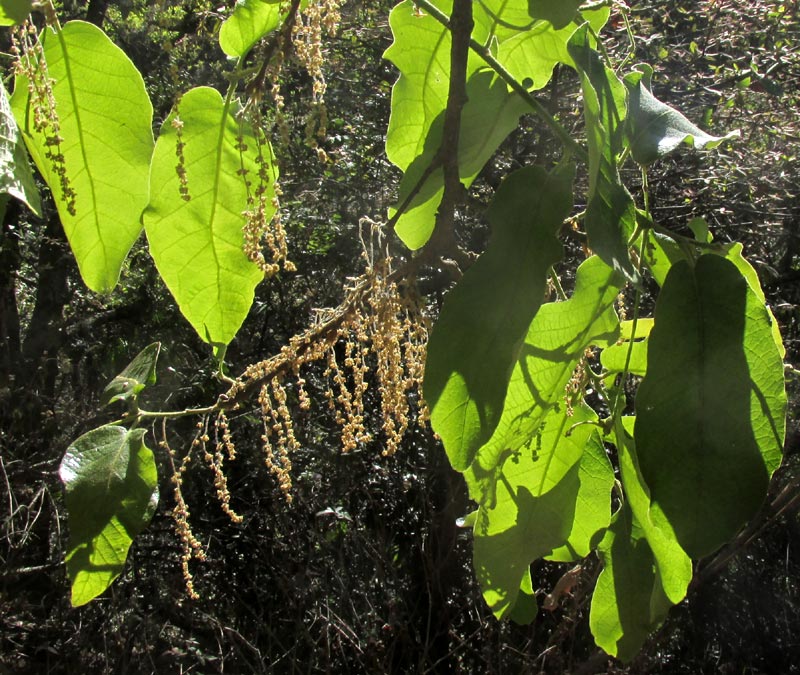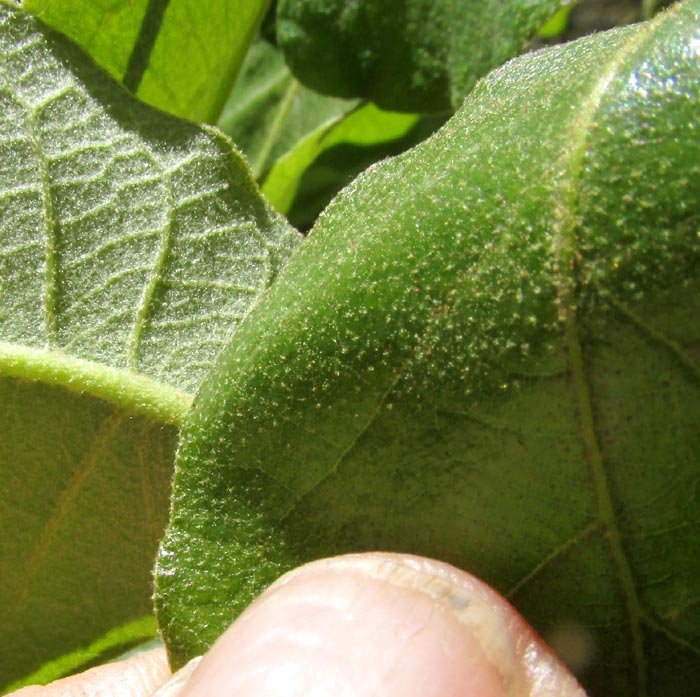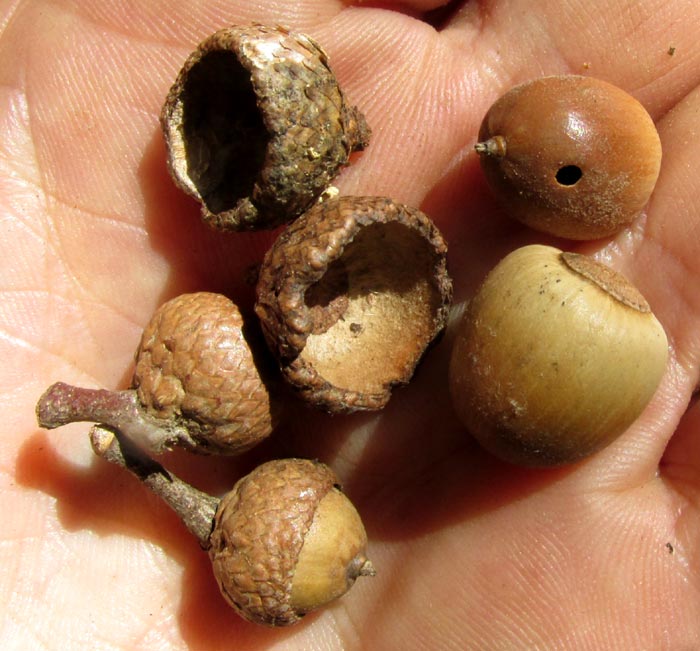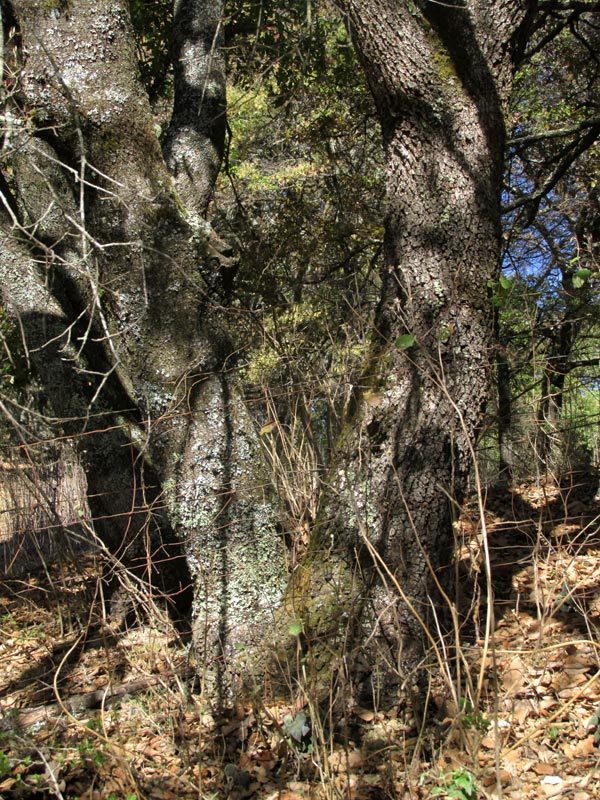Excerpts from Jim Conrad's
Naturalist Newsletter
entry from field notes dated April 16, 2022, taken in disturbed/reforesting borderline cloudforest within 1km of Valle de los Fantasmas, elevation ±2,320m (7600 ft), with limestone bedrock; about 40kms (24 miles), straight-line, ESE of San Luis Potosí, San Luis Potosí state, MÉXICO, (N22.06°, W100.62°)
QUERCUS LAXA

Here during the driest part of the late dry season, in an oak-pine forest on the steep slope of a limestone hill, an oak was preparing for the pending rainy season by issuing new leaves and dangling aments of male flowers, shown above. The leaves were a little unusual for oak species in that their margins were only vaguely and irregularly lobed, with no teeth or sharp points, not even at the blade tips. Below, you can see that the male flowers and the rachis bearing them were very hairy.

The hairiness was general on the tree, of various kinds, and in the end the nature of the hairs and their associated glands was important for identification. Below you see that the leaf surface, on the right, was rough with scattered patches of stubs of hairs, and the undersurface shown on the left was so silvery hairy that the leaf surface couldn't be seen:

Beneath the tree a few of last season's acorns and their empty cups remained hidden below the fallen leaves, shown below:

Good field marks shown on the acorns include that they were borne on short stems, or peduncles, and their cups could cover the nut's lower two-thirds. Also, they were smallish for acorns.
This was a fence tree split at its base, or maybe two tree trees grown together, as seen below:

All the above features, especially the leaves' unusual form and the specific nature of the various parts' hairiness, leads to QUERCUS LAXA. The species bears no English name, and in Spanish no name for it appears to have been documented other than encino, which is the general name for "oak." This is explained by Quercus laxa being endemic just to arid, upland northern and central Mexico, and apparently is uncommon. Relatively few collections have been made of the species. The Flora del Bajío describes as very limited, with problems for survival.